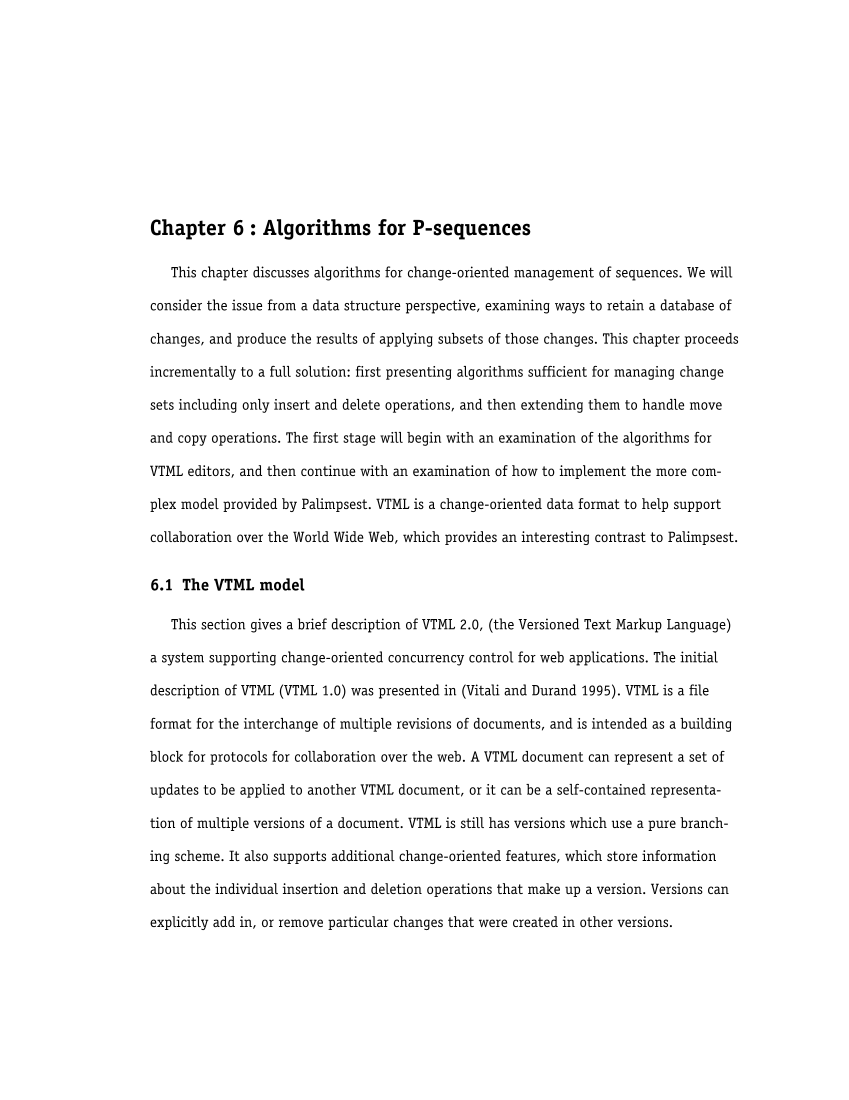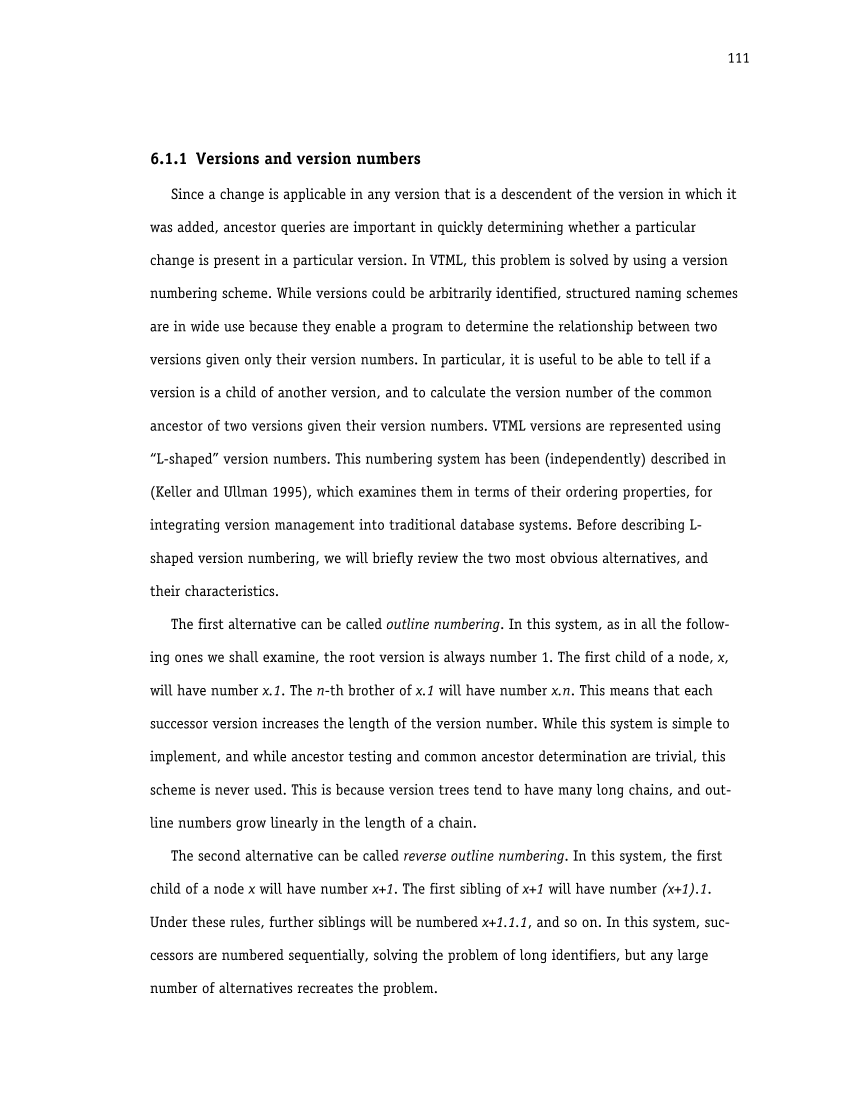Chapter�6:�Algorithms�for�P-sequences
This�chapter�discusses�algorithms�for�change-oriented�management�of�sequences.�We�will
consider�the�issue�from�a�data�structure�perspective,�examining�ways�to�retain�a�database�of
changes,�and�produce�the�results�of�applying�subsets�of�those�changes.�This�chapter�proceeds
incrementally�to�a�full�solution:�first�presenting�algorithms�sufficient�for�managing�change
sets�including�only�insert�and�delete�operations,�and�then�extending�them�to�handle�move
and�copy�operations.�The�first�stage�will�begin�with�an�examination�of�the�algorithms�for
VTML�editors,�and�then�continue�with�an�examination�of�how�to�implement�the�more�com-
plex�model�provided�by�Palimpsest.�VTML�is�a�change-oriented�data�format�to�help�support
collaboration�over�the�World�Wide�Web,�which�provides�an�interesting�contrast�to�Palimpsest.
6.1 The�VTML�model
This�section�gives�a�brief�description�of�VTML�2.0,�(the�Versioned�Text�Markup�Language)
a�system�supporting�change-oriented�concurrency�control�for�web�applications.�The�initial
description�of�VTML�(VTML�1.0)�was�presented�in�(Vitali�and�Durand�1995).�VTML�is�a�file
format�for�the�interchange�of�multiple�revisions�of�documents,�and�is�intended�as�a�building
block�for�protocols�for�collaboration�over�the�web.�A�VTML�document�can�represent�a�set�of
updates�to�be�applied�to�another�VTML�document,�or�it�can�be�a�self-contained�representa-
tion�of�multiple�versions�of�a�document.�VTML�is�still�has�versions�which�use�a�pure�branch-
ing�scheme.�It�also�supports�additional�change-oriented�features,�which�store�information
about�the�individual�insertion�and�deletion�operations�that�make�up�a�version.�Versions�can
explicitly�add�in,�or�remove�particular�changes�that�were�created�in�other�versions.
This�chapter�discusses�algorithms�for�change-oriented�management�of�sequences.�We�will
consider�the�issue�from�a�data�structure�perspective,�examining�ways�to�retain�a�database�of
changes,�and�produce�the�results�of�applying�subsets�of�those�changes.�This�chapter�proceeds
incrementally�to�a�full�solution:�first�presenting�algorithms�sufficient�for�managing�change
sets�including�only�insert�and�delete�operations,�and�then�extending�them�to�handle�move
and�copy�operations.�The�first�stage�will�begin�with�an�examination�of�the�algorithms�for
VTML�editors,�and�then�continue�with�an�examination�of�how�to�implement�the�more�com-
plex�model�provided�by�Palimpsest.�VTML�is�a�change-oriented�data�format�to�help�support
collaboration�over�the�World�Wide�Web,�which�provides�an�interesting�contrast�to�Palimpsest.
6.1 The�VTML�model
This�section�gives�a�brief�description�of�VTML�2.0,�(the�Versioned�Text�Markup�Language)
a�system�supporting�change-oriented�concurrency�control�for�web�applications.�The�initial
description�of�VTML�(VTML�1.0)�was�presented�in�(Vitali�and�Durand�1995).�VTML�is�a�file
format�for�the�interchange�of�multiple�revisions�of�documents,�and�is�intended�as�a�building
block�for�protocols�for�collaboration�over�the�web.�A�VTML�document�can�represent�a�set�of
updates�to�be�applied�to�another�VTML�document,�or�it�can�be�a�self-contained�representa-
tion�of�multiple�versions�of�a�document.�VTML�is�still�has�versions�which�use�a�pure�branch-
ing�scheme.�It�also�supports�additional�change-oriented�features,�which�store�information
about�the�individual�insertion�and�deletion�operations�that�make�up�a�version.�Versions�can
explicitly�add�in,�or�remove�particular�changes�that�were�created�in�other�versions.





























































































































































































